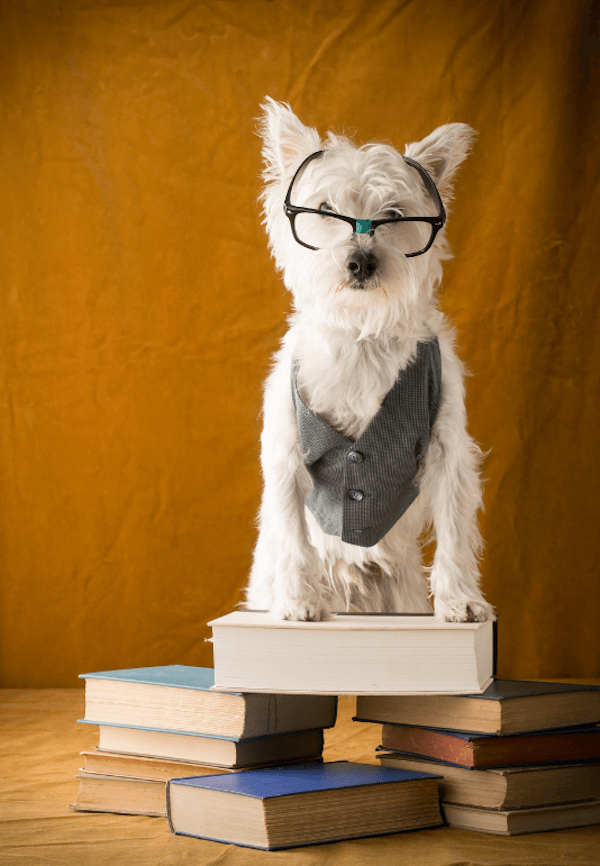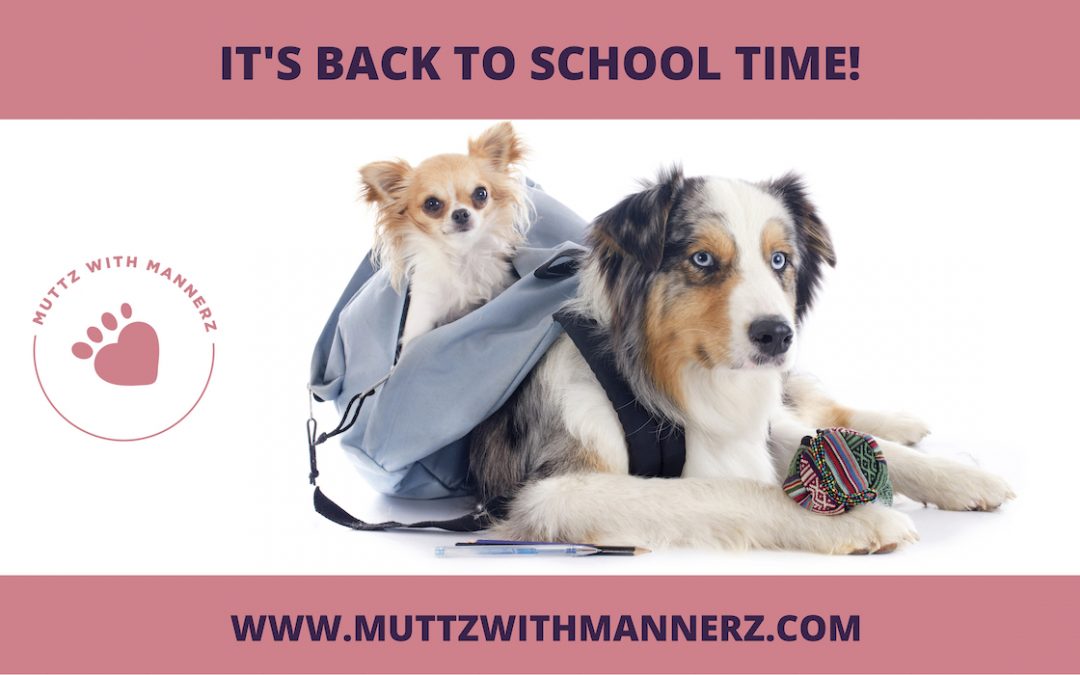Back to School: How to make the transition less stressful… for everyone!
Now that the summer is coming to a close and the back-to-school preparation bustle has begun, your dog will likely begin to notice the changes in household routine. After months of family companionship and fun, the day may be approaching when the house will suddenly be very quiet for long periods, and this can be very upsetting for many dogs.
To help ease the transition to your new routines here are a few tips to get started on now. Incorporate them into your daily routine so you can start preparing your dog with your new schedule in mind as soon as possible:
- Create a schedule and review responsibilities
Dogs feel secure when they have a familiar routine. Starting a new routine and giving them time to learn it is comforting and reassuring for your dog. This is especially critical if your dog will be alone for long periods of time.Set new bed, play & walk times and change their feeding routine a couple of weeks ahead of school starting or going back to work. Review who’s responsible for what for your dog – as this may change with the new schedule and is crucial to your dog’s wellbeing. This will help your dog adjust, and also get the whole family into the new routine. - Exercise
Provide plenty of exercise for your dog particularly in the morning to help them burn off extra energy. Remember they just had a good night’s sleep. Depending on your dog’s age, energy level etc., schedule an extra walk during the day. If you can’t do this yourself consider hiring a dog walker or have them attend a quality daycare, like our Canine Academy. - Calm Departures and Returns
Don’t make leaving the house dramatic. Keep it natural and low-key. Your worrying or over-excitement can make them nervous. Dogs pick up on your actions. If your dog does suffer from separation anxiety, they will be more nervous if you are – so stay calm. - Include Your Dog
 If you walk or drive your children to and from the bus or school, bring the dog. This will help your puppy adjust to seeing them leave.Your dog will learn to associate being with them on the walk or ride as a fun thing.They also will have the time on the walk or ride home with you to disconnect. Knowing they will get to come along to pick up the children later will give your dog something to look forward to during the day.
If you walk or drive your children to and from the bus or school, bring the dog. This will help your puppy adjust to seeing them leave.Your dog will learn to associate being with them on the walk or ride as a fun thing.They also will have the time on the walk or ride home with you to disconnect. Knowing they will get to come along to pick up the children later will give your dog something to look forward to during the day. - Get a New Toy
You are getting the kids lots of new things to get ready for school i.e. clothes, school supplies, etc. – remember to get your dog a new toy to entertain themselves with while they are at school. Maybe an extra-special safe chew toy or one that you can stuff with tasty treats. There are even puzzle toys that will encourage them to look for hidden goodies. - Teach Them Something New
This is a great time to allow them to learn something too! Teach them a new trick. Learning new things helps ease your dog’s boredom and loneliness. If you want to ramp up things join one of our training classes like Fun with Agility. - Play Music
Some dog daycares or shelters have found playing calming music helps their dogs relax while having downtime. Put on classical music and maybe have some lavender essence or room spray too (be careful it is not too close to your dog). - Spend Quality Time Together
When the family is home encourage your kids to engage in quality time with your dog each day. It could be a long walk, or just relaxing together while doing their homework.
What are some signs your dog is struggling?
If any of the following behaviors occur consistently when you or the family is gone, your dog may be suffering from depression, anxiety, or frustration.
- Barking, whining, or crying, often in rhythmic or in repetitive intervals. The quality of the bark or vocalization is usually higher in pitch.
- Urination may be marking or squatting. Defecation is also common and can be quite loose in association with stress. (But have your veterinarian check to make sure it’s not a medical issue.)
- Chewing on or breaking out of a crate, chewing on windows or door moldings, or jumping a fence may all be signs of their attempt to get to their owners. Chewing is often items with the owner’s scent is concentrated – like furniture, or items that we touch often, such as cell phones, shoes, etc.
- When escape is not possible drooling, shaking, or pacing may be noticed.
These can also be signs of separation anxiety, which may occur with the changes in your family schedule.
To learn more about separation anxiety and how to help your dog, tune into our recent podcast episode here or review our blog “Separation Anxiety in Dogs” which can provide you with some specific things you can do to help your dog become less stressed.
You may find that stress and anxiety are more pronounced for single dog families and families that welcomed a new puppy into their family in the last few months. The bottom line is to think about how you might feel in your dog’s situation and then find ways to ease it for them.
We’d love to see you in any of our classes or our Canine Academy Daycare.
Both our Canine Academy Daycare and classes fill up quickly and we usually have just a few spots available, so we encourage you to register early! You can learn more at our website or to register visit https://muttzwithmannerz.propetware.com to set up your account.

